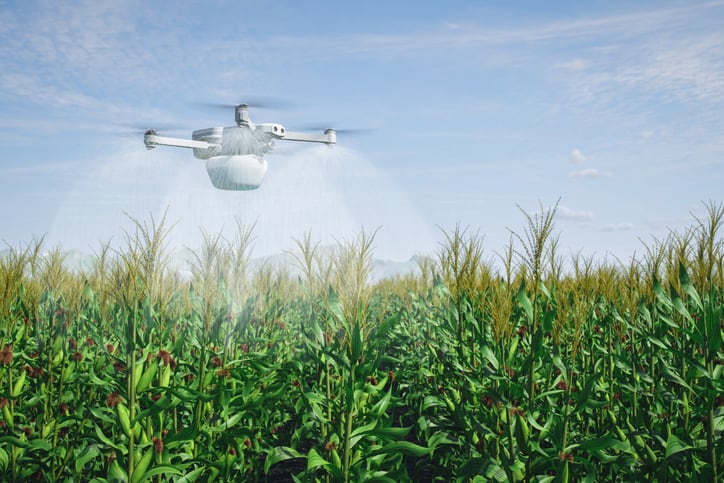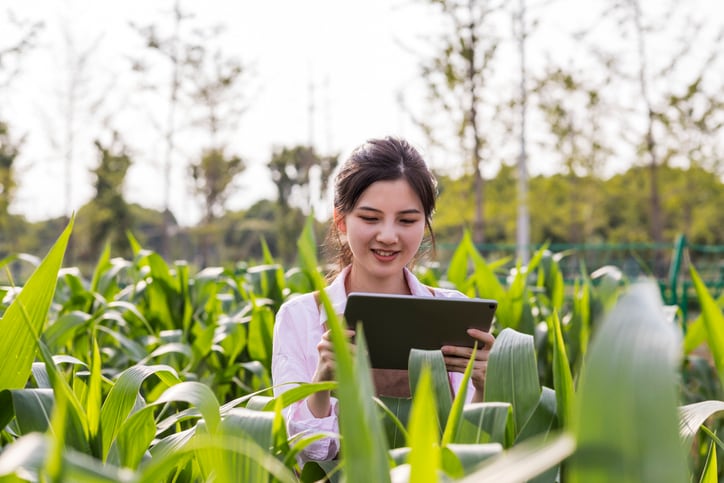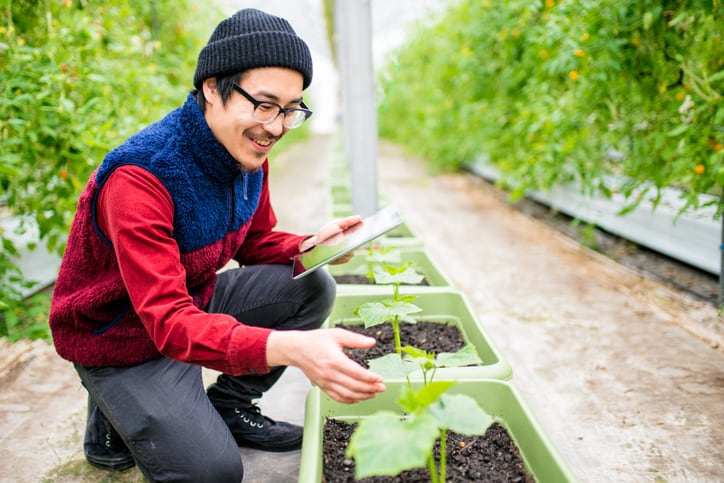The appeal of precision agriculture is plentiful. Potential benefits include the ability to boost productivity, reduce costs, reduce environmental harm, and enable data-driven, adaptive farming – all of which are crucial for meeting the growing global demand for food in a sustainable manner.
The likes of drones and imagery analytics, farm management software, and field IoT offer farmers with valuable insights to make more informed management decisions.
But strategies like these are “extremely complicated and virtually impossible to manage at scale by conventional means”, warns a new study published in the European Journal of Agronomy which lists the research questions that will need to be tackled as a priority in the future.
The first relates to monitoring farmland to spot any nutrient deficiency, weed growth or pest infestations in real-time. Satellite images provide a rough overview, while drones or robots enable a much more detailed monitoring. The latter can cover a whole field systematically and even record the condition of individual plants in the process. “One difficulty lies in linking all these pieces of information together,” said Sabine Seidel, a researcher at the University of Bonn.
“For example, when will a low resolution be sufficient? When do things need to get more detailed? How do drones need to fly in order to achieve maximum efficiency in getting a look at all the crops, particularly those at risk?
According to the researchers, the data obtained provides a picture of the current state of affairs regarding the effectiveness of the current data available.
However, farmers are chiefly interested in weighing up various potential strategies and their possible implications: how many weeds can my crop withstand, and when do I need to intervene? Where do I need to apply fertilizer, and how much should I put down? What would happen if I used less pesticide? “To answer questions like these, you have to create digital copies of your farmland,” Seidel said. “There are several ways to do this. Something that researchers still need to find out is how to combine the various approaches to get more accurate models.” Suitable methods also need to be developed to formulate recommendations for action based on these models. Techniques borrowed from machine learning and AI have a major role to play in both these areas.
Farmers have to be on board
If crop production is actually to embrace this digital revolution, meanwhile, the people who will actually be putting it into action—the farmers—also need to be convinced of its benefits. “Going forward, we’ll have to focus more on the question of what underlying conditions are needed to secure this acceptance,” said Professor Heiner Kuhlmann, a University of Bonn geodesist.
“You could offer financial incentives or set legal limits on using fertilizer, for instance.” The effectiveness of tools like these, either on their own or in combination, can likewise be gauged nowadays using computer models.
In the paper, the researchers also use examples to demonstrate what current technologies are already capable of doing. For instance, a “digital twin” of areas under cultivation can be created and fed a steady stream of various kinds of data with the help of sensors, e.g. to detect root growth or the release of gaseous nitrogen compounds from the soil. “In the medium term, this will enable levels of nitrogen fertiliser being applied to be adapted to crops’ needs in real-time depending on how nutrient-rich a particular spot is,” said Professor Cyrill Stachnis, head of the university’s robotics group.





